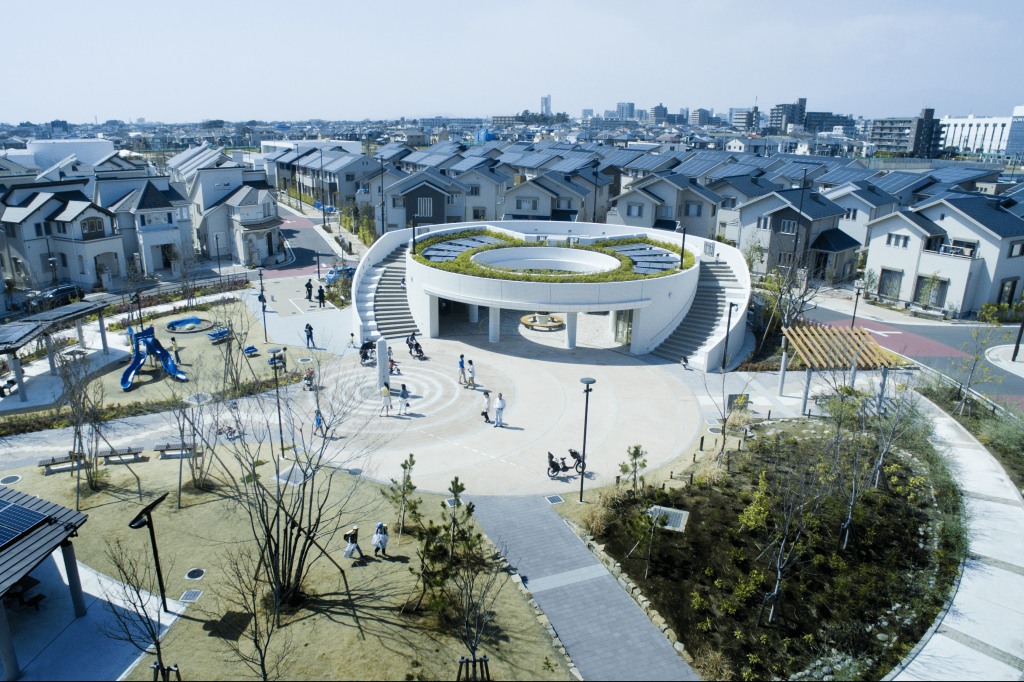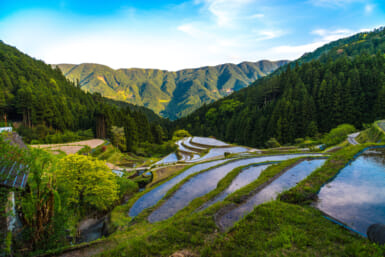With sustainability at the forefront, these three Japanese cities are doubling their efforts to normalize an environmentally-conscious lifestyle in the country.
Kitakyushu Super City for SDGs, Fukuoka Prefecture
An important gateway between Honshu and Kyushu, the city of Kitakyushu in Fukuoka Prefecture is currently undergoing the selection process for the super city initiative led by the Japanese government. A large-scale “Super City for SDGs Concept” would involve 78 private companies and research institutions, counting 30 projects for sustainable development. Historically, the Higashida neighborhood in the city has developed as an industrial town since the opening of Yahata Steel Works, a steel mill established in 1901.
The neighborhood has been developing a sustainable town centered around the environment. One main objective the organizers are planning to introduce is the concept of Mobility as a Service (MaaS). This “Higashida MaaS” project was started in hopes of providing more convenience to the local residents. The city plans to fully transform the local transportation system into a digital IoT-based format. Implemented tools will be adopted as broader MaaS tools to help digitize bus stop screens and monitors and introduce electronic buses and MaaS mobile apps.
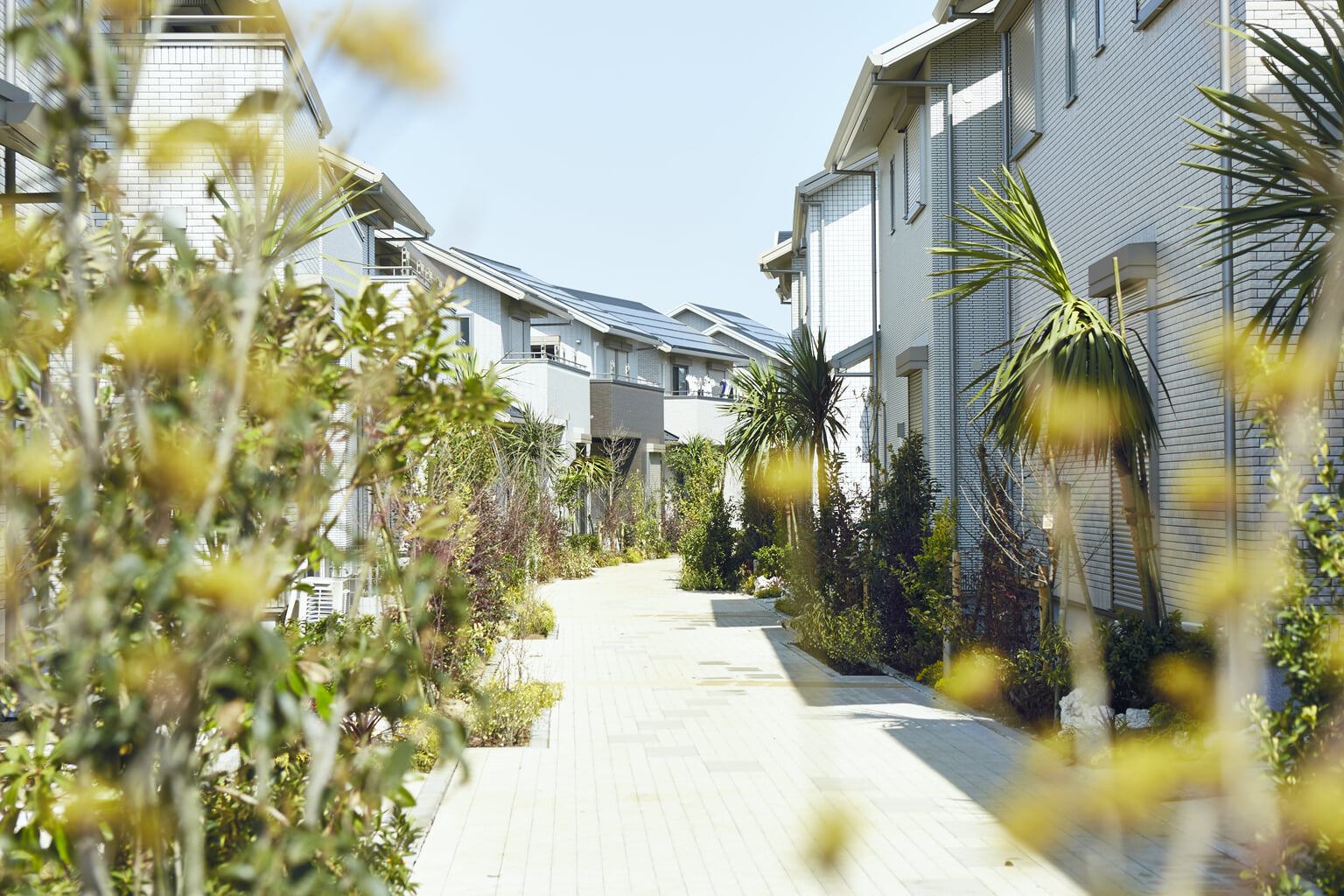
Fujisawa Sustainable Smart Town, Garden pass
Another emphasis of the project is establishing a strong energy infrastructure for a reduced carbon footprint. A commercial facility, “The Outlets,” with a large-scale solar power plant is scheduled for opening in spring of 2022, in addition to a hydrogen pipeline that would utilize CO2-free electricity generation. The energy management of the region’s public facilities is set to achieve a 100 percent renewable energy supply based on the Climate Group’s RE 100 initiative by 2025.
The ultimate goal of this Super City concept is to accelerate the adoption of SDGs in various sectors of the local economy, environment and society. The Higashida area has already been receiving much positive feedback from both domestic and international stakeholders and continues to implement innovations to become a leading example of a sustainable town in Fukuoka Prefecture as the Super City candidate.
Fujisawa Sustainable Smart Town, Kanagawa Prefecture
They say it takes a village to raise kids. So, why not make it sustainable? Fujisawa Sustainable Smart Town (SST) is a residential area designated for sustainable infrastructure development. Located in the southeastern part of Kanagawa Prefecture, just 60 km from greater Tokyo, Fujisawa SST is an active residential smart town that currently includes 561 individual houses, and 400 more apartment buildings on their way, and can be considered as a constantly evolving community. The basic concept for the project was originally generated in 2010, developed by the Fujisawa SST Council, comprising more than 20 organizations, both private and public. Their goal is simple; to build a town that would exist “a hundred years later.”
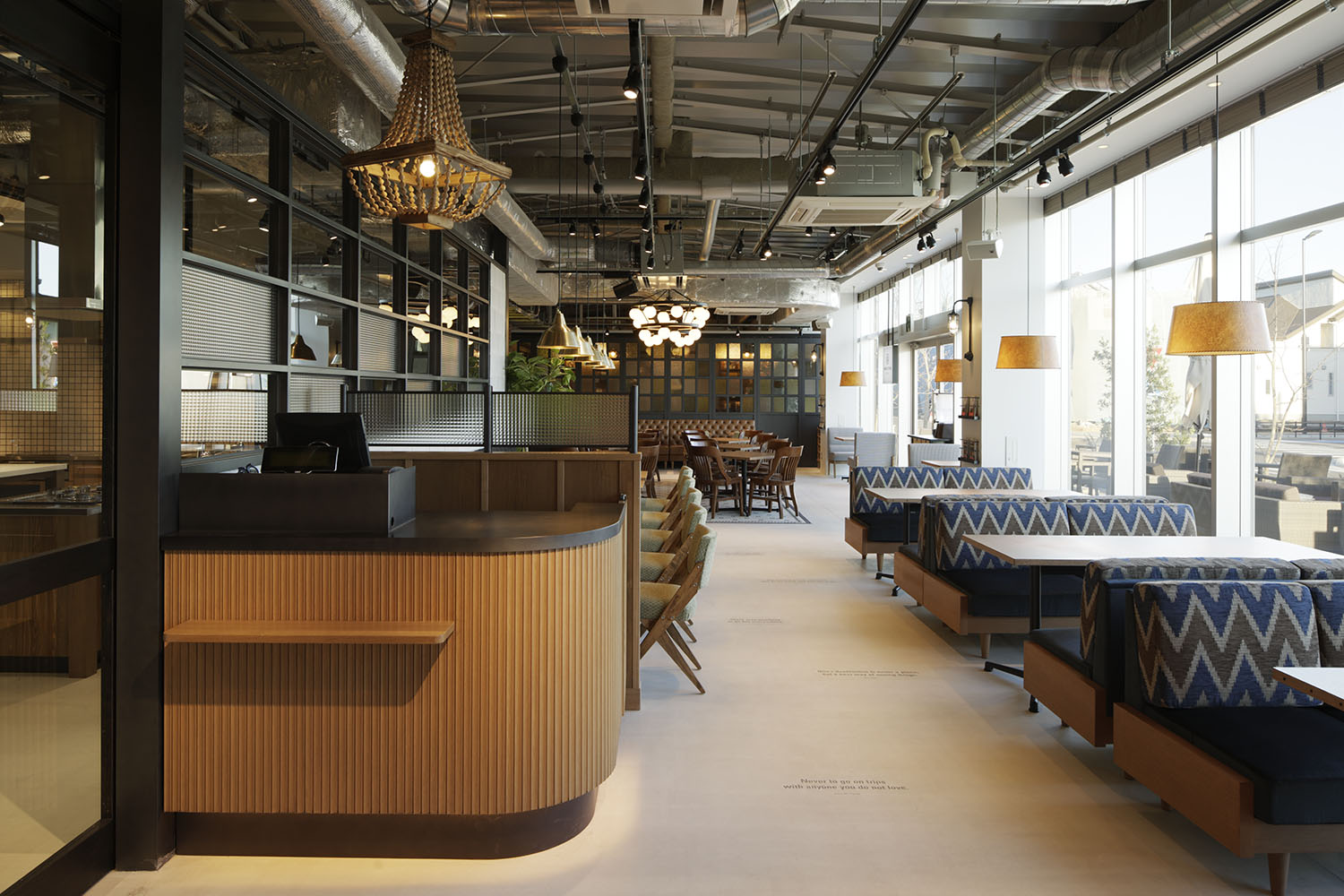
Fujisawa Sustainable Smart Town, SQUARE Center Cafe
A vast land that extends to as far as 19 hectares includes private houses, a number of parks and gardens, car-sharing spots, office spaces, kid’s playgrounds and playrooms, cafés and community gardens. Its objective to reduce CO2 emission by 70 percent (compared to 1990) is something that no other Japanese city has achieved so far. Freedom in mobility and access to personalized portal sites are just a fraction of the greater perks community members can enjoy. Data of energy use, weather forecast, traffic patterns, updates and news are analyzed and provided through the portal for members to apply and better plan their daily lives. In pursuit of becoming the most sustainable residential neighborhood in Japan, Fujisawa SST continues to operate to inspire other local municipalities to adopt sustainable, community-based living.
DaiMaruYu ACT5, Tokyo
The Wall Street of Tokyo, the Otemachi, Marunouchi and Yurakucho area, more commonly referred to as DaiMaruYu by industry professionals, is a business hub to more than 4,000 companies, embracing a daily average of more than a million commuters. DaiMaruYu ACT5 is a result of these three areas of the capital’s Chiyoda Ward coming together to achieve five of the SDGs together (food, well-being, diversity/inclusion, communication and global warming). From diversity training to food loss reduction initiatives and environmental improvement in the outside garden of the Imperial Palace, participants of ACT5 host various fun, inclusive events to attract visitors, in hopes of raising awareness.
Led by Mitsubishi Estate and the Council for Area Development and Management of Otemachi, Marunouchi, and Yurakucho, as well as other public and private parties, the ACT5 project only commenced in May 2020, celebrating its first anniversary this year. The chairman of the DaiMaruYu ACT5 Executive Committee, Yorihiro Nagai, shared the details of their journey in a recent interview. “This area used to be just another financial district, where stores and restaurants shut once the clock struck five. Nowadays, we see more and more startups and companies from different industries establish their HQs in the neighborhood, and we see that as an opportunity for change.”
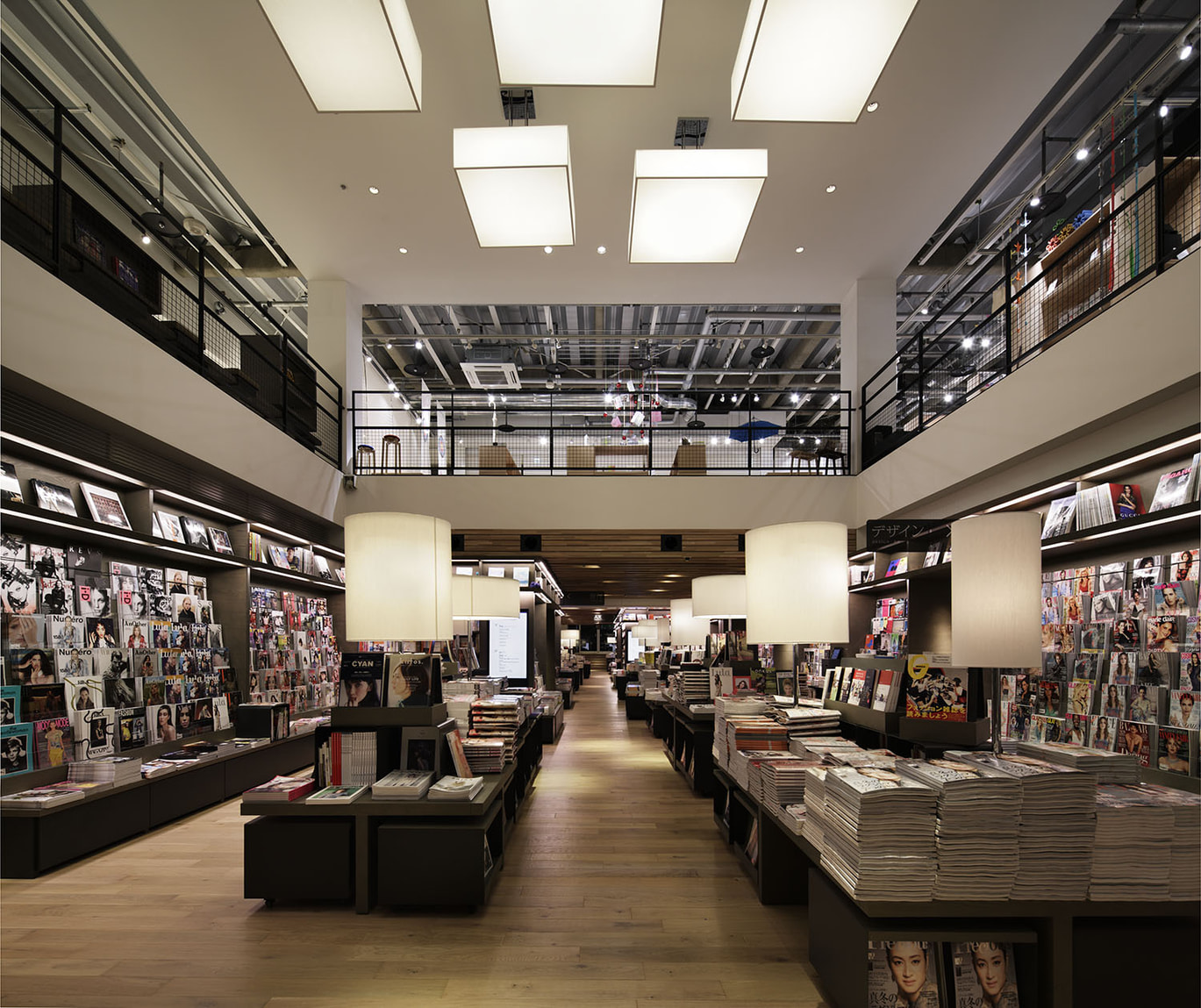
Shonan T-SITE, Magazine street
The ACT5’s main objectives are to build a community, combining the resources that the three neighborhoods can offer, as well as to become an access point for networking and building valuable relationships among visitors and local business participants. “What we do isn’t something grandiose. Most of the larger brands involved in ACT5 are already doing sustainable activities on their own,” Nagai adds. “Each action we promote is targeted at raising awareness of SDGs. It starts within an individual. We’re passionate about building an engaging network of people who are interested in contributing and who share the same vision. We welcome everyone to come and join the events that we host, and if there are any parties interested in collaboration, we’d be delighted to have a chat.”
Cities and municipalities are actively laying the groundwork to replace the old system with new IoT, renewable energy sources and smart infrastructure for a connected, sustainable living. To build a sustainable Japan, all we have to do is start laying the bricks and foundations.
This article was published in Tokyo Weekender’s special issue, Made in Japan. Flip through the issue by clicking on the image below.
Updated On December 2, 2021

